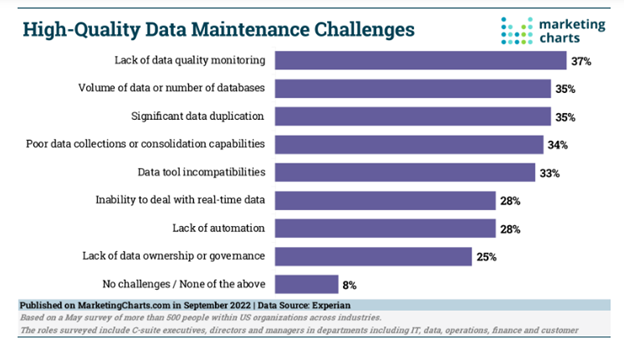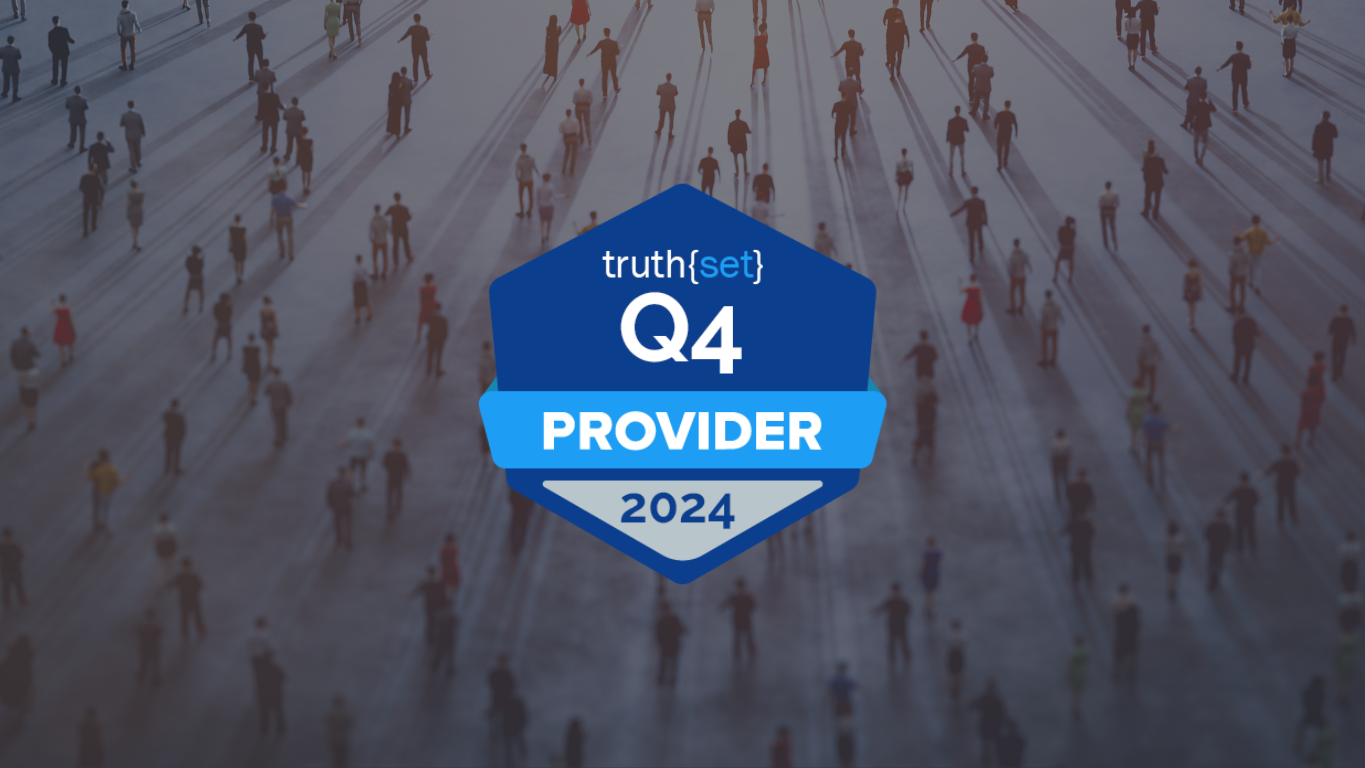While gut instincts can play a role during brainstorming, successful marketing strategies are data-driven.
However, data can be unreliable, incomplete, or inaccurate, leading to poor decision-making and wasted resources. In fact, poor data quality costs US businesses an average of $15 million per year. (Gartner)
According to research by Experian, 94% of respondents see poor-quality data negatively impacting their organization.
If maintaining a clean database is challenging for you, you’re not alone. According to the Experian study, 92% of business leaders have challenges maintaining good-quality data.
Top 3 Data Quality Challenges
The top three data quality challenges are:
- Lack of data quality monitoring (37%)
- Volume of data or the number of databases (35%)
- Significant data duplication (35%)

On the positive side, 87% of businesses say improving the quality of their contact data is a priority this year. Additional findings include:
- 87% of leaders say that data quality is fundamental to the core of their business operations going forward
- 90% of leaders say improving data quality has had a positive impact on customer experience
- 91% say investing in data quality has positively impacted business growth
You must prioritize data quality to make informed decisions for better marketing results.
4 Consequences of Poor Data Quality
Poor data quality can lead to inaccurate insights, ineffective campaigns, and lost revenue. Here are some of the most common consequences of poor data quality:
1. Inaccurate Targeting
Poor data quality can lead to inaccurate targeting, causing your marketing campaigns to be less likely to reach your target audience. This can result in wasted resources and lower ROI.
2. Reduced Customer Satisfaction
If marketing data is inaccurate or incomplete, it can lead to poor customer experiences. For example, if a customer receives a promotional email for a product they’ve already purchased, they may feel frustrated and annoyed.
3. Lost Revenue
Inaccurate data can lead to lost revenue, as marketing campaigns are less effective at driving conversions and sales.
4. Damaged Reputation
If customers receive irrelevant or inaccurate marketing messages, it can damage your brand’s reputation and make customers less likely to engage with future campaigns.
5 Ways to Improve Data Quality
Take a proactive approach to data management. Here are some steps you can take to ensure that your data is accurate and reliable:
1. Use a Data Management Platform
A data management platform (DMP) can help you centralize your data and ensure it’s clean and accurate. A customer data platform (CDP) is a data management system that consolidates and integrates data from multiple channels and sources to build a single, unified profile around each customer.
This data can then be segmented to personalize marketing messages tailored to specific customer segments.
2. Validate Data Sources
Validate your data sources to ensure that they are reliable and accurate. This can involve checking the source’s reputation, reviewing the data’s accuracy, and confirming that it is up-to-date.
It’s important to define clear validation criteria and benchmarks to objectively assess the reliability and suitability of data sources. Establish minimum thresholds for data accuracy, completeness, and relevancy based on business requirements and objectives. Document validation criteria in a standardized format to facilitate consistent evaluation and decision-making across the organization.
3. Implement Data Governance
Data governance involves creating policies and procedures that ensure the accuracy and reliability of data. This can include data quality checks, data validation processes, and regular data audits.
Start by establishing clear and measurable objectives for data governance initiatives. Identify key stakeholders, define their roles and responsibilities, and articulate the desired outcomes of the data governance program. Ensure alignment with broader organizational goals and regulatory compliance requirements.
4. Train Staff
Provide training to your staff on how to collect, manage, and analyze data to ensure that everyone is using the same processes and following the same data quality standards.
Additionally, recognize that different teams have varying data-related needs. Design training modules that cater to the specific requirements of each role, ensuring relevance and practicality. For example, sales teams may require training on data entry techniques, while analytics teams may need advanced training on statistical analysis and modeling.
5. Regularly Review Your Data
Review your data regularly to ensure its accuracy and relevancy. Conduct regular data audits, review customer feedback, and monitor campaign performance to stay eagle-eyed on your data quality.
Use automated monitoring systems and alerts to proactively detect data anomalies and discrepancies in real-time. Consider using data quality tools and platforms equipped with built-in validation checks and error detection mechanisms to flag potential issues as they arise. Set up automated notifications to promptly notify relevant stakeholders of any data quality issues requiring attention and resolution.





